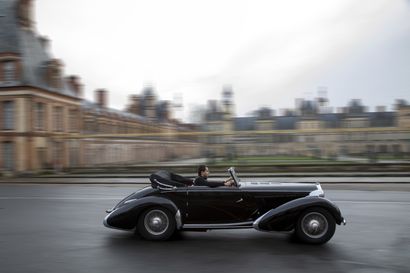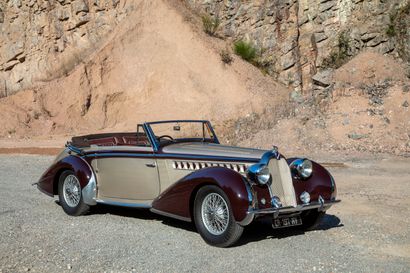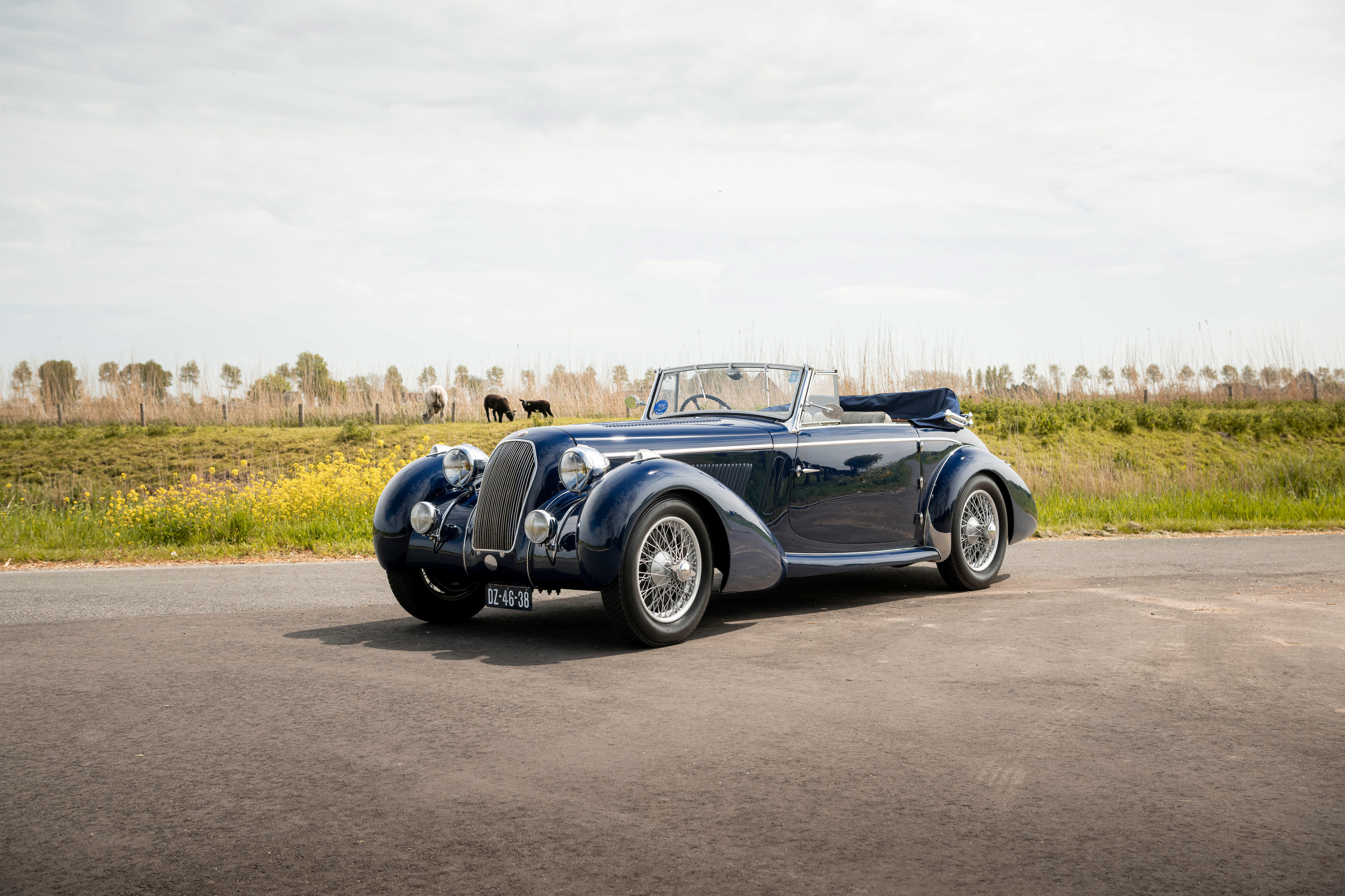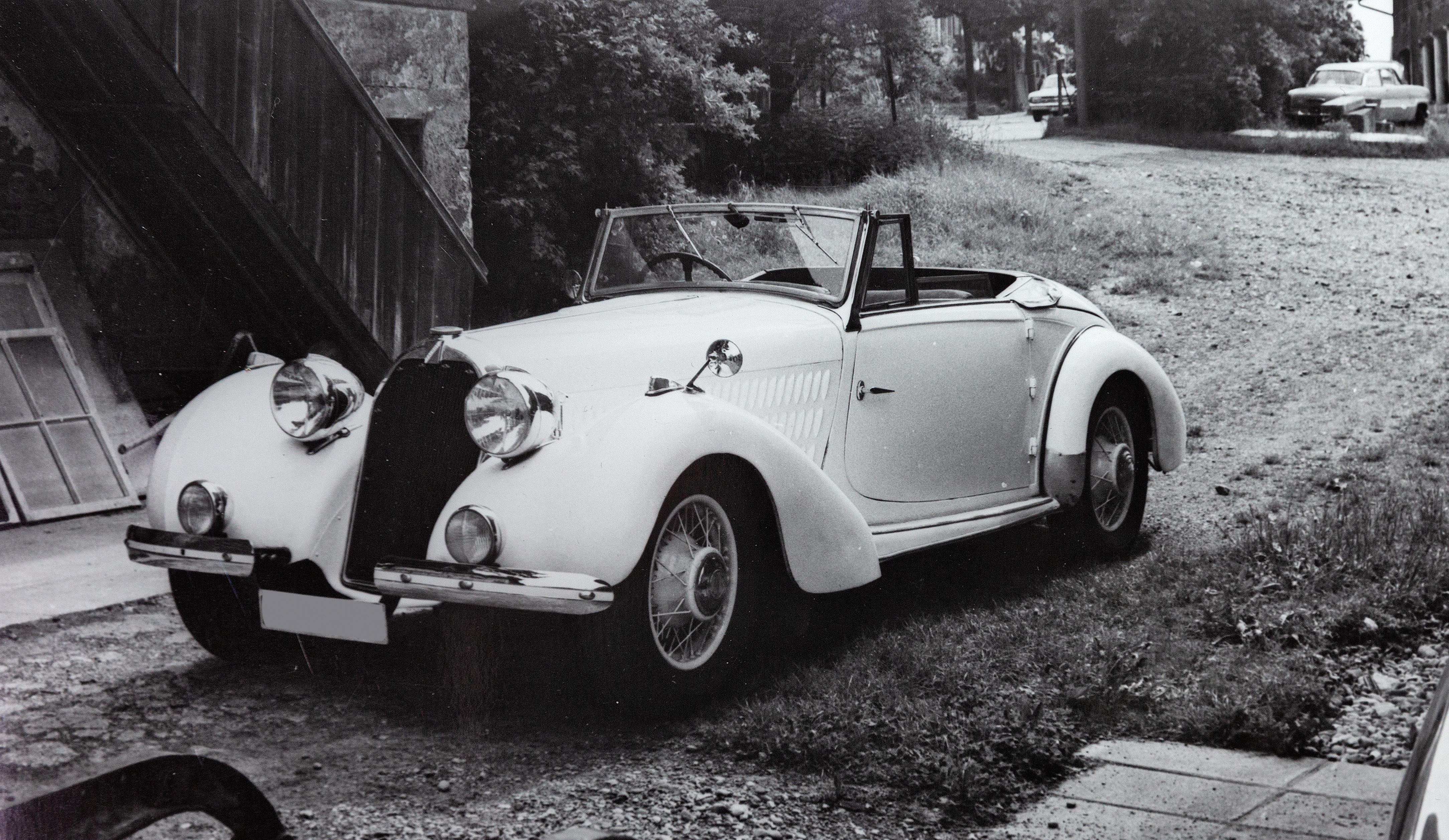On the dissolution of the Sunbeam-Talbot-Darracq combine in 1935, automobile engineer Major A F ‘Tony’ Lago bought the Darracq factory at Suresnes and continued production, selling his cars as Darracqs in the UK and Talbots in France. The revitalised marque embraced both sports car and Grand Prix racing, and in 1937 achieved victories in the French Grand Prix and the Tourist Trophy; from then onwards it was an uphill struggle against the state-subsidised might of the German and Italian opposition. There were, however, many notable successes in the immediate post-war years, including three Grand Prix wins for French Champion Louis Rosier. The first Lago-built cars retained the existing X-braced, independently front suspended chassis, but were powered by new six-cylinder engines of 3.0 and 4.0 litres designed by engineer Walter Becchia. Baby, Minor, Major and Master models, of varying wheelbase lengths up to 3,450mm were produced, while a 2.4-litre four-cylinder model was offered on the French market only. Lago had assisted in the development of the Wilson pre-selector gearbox in England, and this form of transmission was retained on the larger models. The marque’s ultimate pre-war road car, the 4.0-litre T150 Lago Special, featuring inclined overhead valves set in hemispherical combustion chambers and opened via crossed pushrods, produced 140bhp and was good for more than 100mph, while for competition purposes there was the T150C on the shortest available wheelbase of 2,650mm. Finished in dark blue with pale blue-grey leather interior, and right-hand drive like all quality pre-war French sports cars, this 4-litre T23 Cabriolet is the first production shorter-chassis model, also known as the type ‘Baby’, with a wheelbase length of 2,950mm. According to the Club Talbot Register in 1997, this was believed to have been the Paris Show Car for 1938 and was also used by the company in promotional sales literature and material at the time. It also suggests that the 4.0-litre engine is original to the car and lists only three previous owners up until that time. Earlier owners in France include Messieurs Libotte and Fresard, while a latter French custodian, a M. Houdayer, is also listed, after which time the car appears to have been exported to the USA where it passed into the collection of the well-known Charles Morse in Washington State. While in the previous French ownership it was understood to have undergone a complete mechanical rebuild by an expert, who had been employed in the Talbot Works at Suresnes in Paris. (Some photographic evidence supports the engine rebuild). Clearly much work has been done to renovate all aspects of the car, and it now performs very well and is in an excellent state of presentation throughout. Previous documentation for registration in the USA, France and now current UK registration paperwork are all available with the car, which possesses a road fund licence and MoT certificate, both of which are valid until June 2006.
On the dissolution of the Sunbeam-Talbot-Darracq combine in 1935, automobile engineer Major A F ‘Tony’ Lago bought the Darracq factory at Suresnes and continued production, selling his cars as Darracqs in the UK and Talbots in France. The revitalised marque embraced both sports car and Grand Prix racing, and in 1937 achieved victories in the French Grand Prix and the Tourist Trophy; from then onwards it was an uphill struggle against the state-subsidised might of the German and Italian opposition. There were, however, many notable successes in the immediate post-war years, including three Grand Prix wins for French Champion Louis Rosier. The first Lago-built cars retained the existing X-braced, independently front suspended chassis, but were powered by new six-cylinder engines of 3.0 and 4.0 litres designed by engineer Walter Becchia. Baby, Minor, Major and Master models, of varying wheelbase lengths up to 3,450mm were produced, while a 2.4-litre four-cylinder model was offered on the French market only. Lago had assisted in the development of the Wilson pre-selector gearbox in England, and this form of transmission was retained on the larger models. The marque’s ultimate pre-war road car, the 4.0-litre T150 Lago Special, featuring inclined overhead valves set in hemispherical combustion chambers and opened via crossed pushrods, produced 140bhp and was good for more than 100mph, while for competition purposes there was the T150C on the shortest available wheelbase of 2,650mm. Finished in dark blue with pale blue-grey leather interior, and right-hand drive like all quality pre-war French sports cars, this 4-litre T23 Cabriolet is the first production shorter-chassis model, also known as the type ‘Baby’, with a wheelbase length of 2,950mm. According to the Club Talbot Register in 1997, this was believed to have been the Paris Show Car for 1938 and was also used by the company in promotional sales literature and material at the time. It also suggests that the 4.0-litre engine is original to the car and lists only three previous owners up until that time. Earlier owners in France include Messieurs Libotte and Fresard, while a latter French custodian, a M. Houdayer, is also listed, after which time the car appears to have been exported to the USA where it passed into the collection of the well-known Charles Morse in Washington State. While in the previous French ownership it was understood to have undergone a complete mechanical rebuild by an expert, who had been employed in the Talbot Works at Suresnes in Paris. (Some photographic evidence supports the engine rebuild). Clearly much work has been done to renovate all aspects of the car, and it now performs very well and is in an excellent state of presentation throughout. Previous documentation for registration in the USA, France and now current UK registration paperwork are all available with the car, which possesses a road fund licence and MoT certificate, both of which are valid until June 2006.









Testen Sie LotSearch und seine Premium-Features 7 Tage - ohne Kosten!
Lassen Sie sich automatisch über neue Objekte in kommenden Auktionen benachrichtigen.
Suchauftrag anlegen